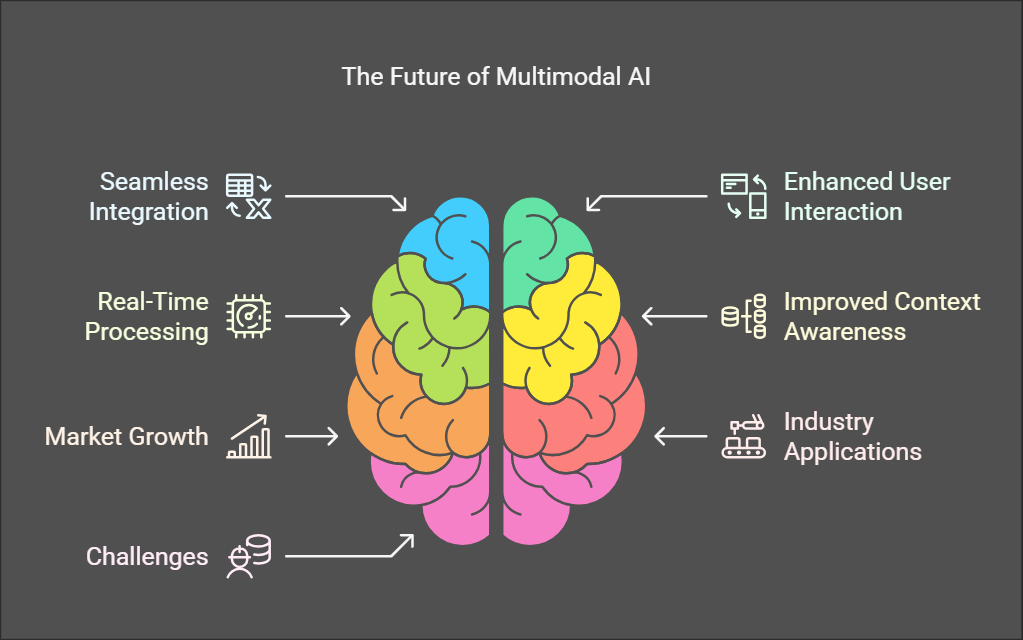The Top AI Trends of 2025: The Future of Innovation and Transformation
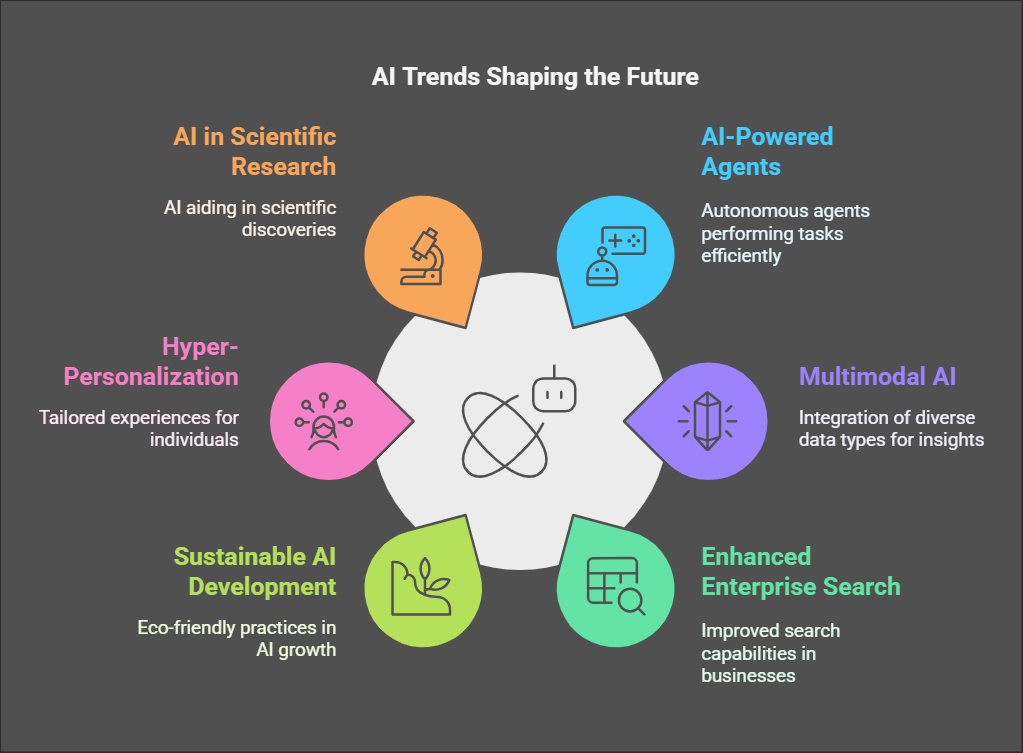
The landscape of artificial intelligence is evolving at an unprecedented pace, and 2025 is set to deliver groundbreaking advancements that will reshape industries and daily life. As technology improves, businesses and individuals must stay ahead of emerging trends to fully harness AI’s potential. In this post, we explore the Top AI Trends of 2025 and discuss how these innovations will impact various sectors.
1. AI-Powered Agents
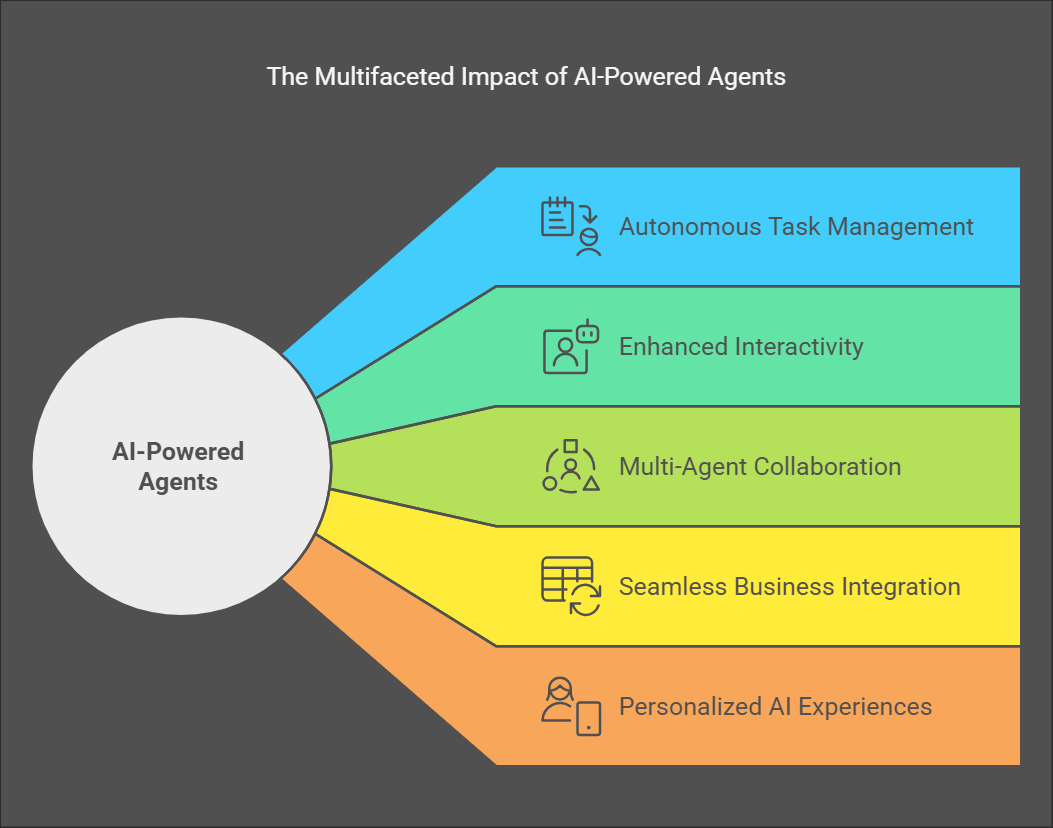
One of the top AI Trends of 2025 is AI-powered agents, a set to revolutionize industries by autonomously managing tasks that were once manual and time-consuming. With advancements in memory, reasoning, and multimodal capabilities, these intelligent systems will perform complex operations across various sectors, enhancing efficiency and productivity at an unprecedented scale.
Key Features
✅ Autonomous Task Management
AI agents will take on a wider range of responsibilities, from IT troubleshooting and HR report generation to handling customer inquiries. By automating routine tasks, businesses can free up employees to focus on strategic and creative initiatives.
✅ Enhanced Interactivity
Improvements in natural language processing (NLP) and contextual understanding will make AI agents more intuitive and responsive. Users will interact with these systems seamlessly, boosting productivity across customer service, internal communication, and decision-making processes.
✅ Multi-Agent Collaboration
A new wave of AI systems will involve multiple agents working together to solve problems and optimize workflows. This approach will be particularly beneficial in areas like supply chain management, logistics, and large-scale customer support operations.
✅ Seamless Business Integration
Organizations will increasingly integrate AI agents within their workflows to streamline operations. Many Fortune 500 companies are already leveraging AI-powered tools like Microsoft 365 Copilot, signaling a shift towards widespread automation in corporate environments.
✅ Personalized AI Experiences
AI-powered agents will become more tailored to individual users and business needs, adapting to unique preferences and brand values. This hyper-personalization will improve customer engagement, making AI-driven interactions feel more natural and meaningful.
Market Impact & Economic Potential
The adoption of AI-powered agents is expected to drive substantial economic growth. Businesses investing in these technologies could see a return of $3.70 for every dollar spent, with AI projected to contribute approximately $2.7 trillion to Europe’s GDP by 2030. As companies move beyond experimentation into full-scale AI deployment, the focus will shift to specialized solutions that solve real operational challenges.
Challenges & Considerations
Despite their potential, AI-powered agents come with challenges related to transparency, accountability, and ethical governance. As these systems gain autonomy, ensuring responsible AI use, mitigating biases, and maintaining human oversight will be critical in fostering trust and reliability.
2. Multimodal AI
The emergence of multimodal AI is transforming the field of artificial intelligence by integrating text, images, audio, and video into a cohesive system. This advancement improves AI’s ability to replicate human cognitive processes, leading to a deeper understanding of context, more engaging interactions, and innovative applications across various industries.
Key Features
✅ Seamless Integration of Multiple Data Types
Multimodal AI systems will analyze and interpret data from different sources simultaneously. Whether it’s combining text and images for more accurate search results or processing video and audio together for real-time translations, this capability will lead to more intelligent and comprehensive AI applications.
✅ Enhanced User Interaction
Users will interact with AI through multiple inputs, including speech, gestures, and visual elements. This multi-channel engagement will make AI tools more intuitive, bridging the gap between human communication and machine understanding.
✅ Real-Time Processing and Decision-Making
With advancements in computational power, multimodal AI will be capable of processing vast amounts of data in real-time. This feature will be crucial for applications like autonomous driving, virtual assistants, and interactive education, where instant responses are required.
✅ Improved Context Awareness
By leveraging advanced machine learning techniques, multimodal AI will better understand how different data types relate to each other. This will lead to more context-aware AI applications, such as chatbots that understand emotional tone from voice inputs or search engines that refine results based on images and text combined.
Market Growth and Industry Applications
The multimodal AI market is expected to grow rapidly, with a projected compound annual growth rate (CAGR) of over 30% from 2024 to 2032. Industries such as healthcare, finance, entertainment, and education will increasingly adopt these AI systems for more accurate diagnostics, fraud detection, content recommendations, and personalized learning experiences.
Challenges and Considerations
Despite its vast potential, multimodal AI faces challenges in data integration, model complexity, and computational demands. Ensuring these systems can generate coherent outputs from diverse inputs requires sophisticated algorithms and extensive processing power. Additionally, ethical concerns around data privacy and security will need to be addressed as multimodal AI becomes more widespread.
3. Enhanced Enterprise Search
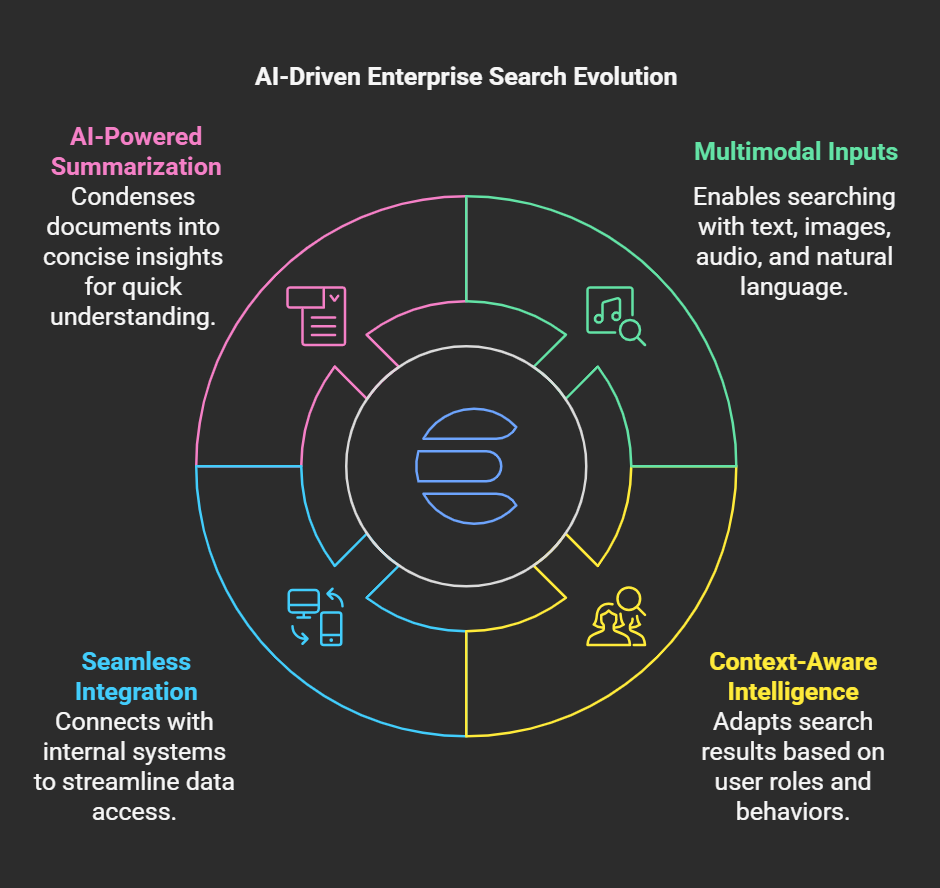
Key Features
✅ Beyond Keyword Queries
Enterprise search will evolve to support multimodal inputs, enabling users to search not only with text but also with images, audio, and natural language queries. This shift will make searching more intuitive, allowing employees to access the right information faster, regardless of format.
✅ Context-Aware Intelligence
AI-powered search systems will adapt to users based on their roles, industries, and past search behaviors. For example, financial professionals will receive results aligned with financial regulations, while medical professionals will see context-specific answers using industry-specific terminology. This personalization will improve search accuracy and relevance.
✅ Seamless Integration with Internal Systems
Enhanced enterprise search tools will integrate seamlessly with internal applications, databases, and cloud platforms. Employees will no longer need to navigate multiple systems to retrieve critical data, reducing time wasted on manual searches and improving overall productivity.
✅ AI-Powered Summarization
Generative AI will enhance search functionality by summarizing long reports, documents, and datasets into concise, easy-to-digest insights. Instead of sifting through multiple pages of information, users will receive clear, actionable summaries, enabling faster decision-making.
Market Impact and Productivity Gains
The impact of AI-driven search solutions on workplace productivity is expected to be substantial. Studies show that employees can spend up to 50% of their time searching for information, creating a significant inefficiency in workflows. By 2025, Gartner predicts that AI will power 35% of all enterprise search activities, helping organizations streamline operations and make informed decisions faster.
Challenges and Considerations
Despite its many advantages, implementing enhanced enterprise search comes with challenges. Organizations must ensure robust security protocols to protect sensitive data accessed through these systems. Additionally, integrating AI-driven search with multiple internal data sources requires careful planning to ensure accuracy, compliance, and seamless functionality.
4. Sustainable AI Developmentnterprise Search
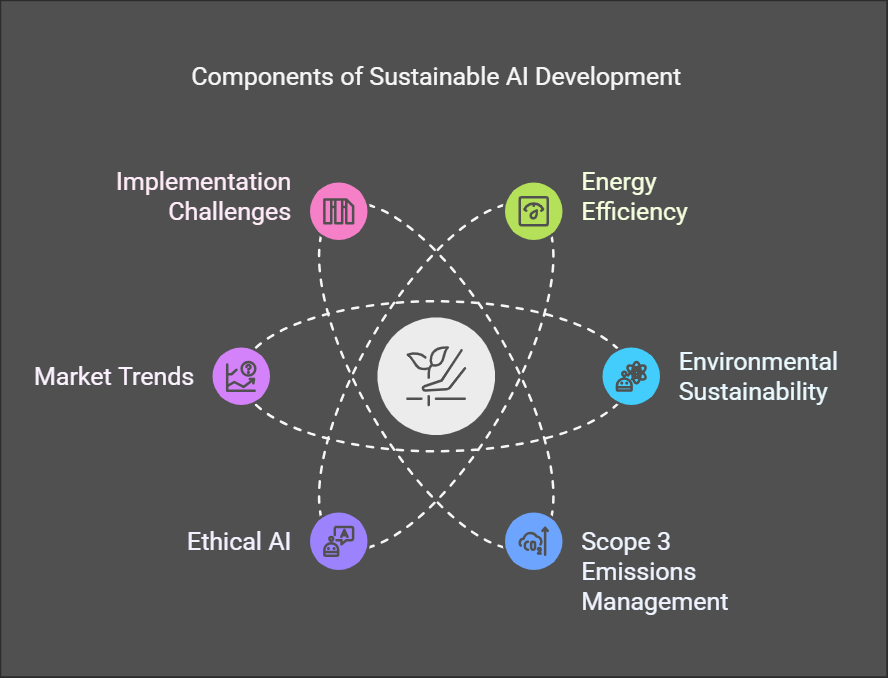
As part of the Top AI Trends of 2025, sustainability has emerged as a key priority, with organizations working to balance technological innovation with environmental responsibility. Sustainable AI development focuses on minimizing the ecological impact of AI systems while harnessing their potential to address global sustainability challenges across industries.
Key Aspects
✅ Energy-Efficient AI Models
A major priority is reducing the energy consumption of AI training and deployment. Researchers are developing optimized algorithms and specialized hardware that require less computational power, minimizing the carbon footprint of AI operations. These innovations make AI both more accessible and environmentally friendly.
✅ AI for Environmental Sustainability
AI is playing a vital role in addressing environmental challenges. Businesses are using generative AI to analyze inefficiencies in resource usage, optimize supply chains, and track carbon footprints. AI-powered insights are enabling organizations to transition to renewable energy sources and adopt more sustainable practices.
✅ Managing Scope 3 Emissions
One of the biggest challenges in corporate sustainability is addressing Scope 3 emissions—those generated indirectly through supply chains. AI is helping businesses analyze supplier data, track environmental risks, and align their sustainability strategies with global climate goals, making carbon management more effective.
✅ Ethical AI and Stakeholder Engagement
With AI adoption expanding, ethical considerations are paramount. Organizations are prioritizing transparency, accountability, and responsible AI development, ensuring that AI-driven decisions respect privacy, fairness, and inclusivity. Engaging stakeholders in decision-making fosters trust and ensures AI serves the greater good.
Market Trends and Future Directions
The demand for sustainable AI solutions is surging, with businesses and policymakers actively seeking energy-efficient models. Conferences like the Sustainable AI 2025 International Conference are bringing together industry leaders, researchers, and policymakers to collaborate on AI-driven solutions that align with sustainable development goals (SDGs). Additionally, AI models are being designed to require fewer data points for training, reducing the reliance on energy-intensive computing.
Challenges in Implementing Sustainable AI
Despite its potential, integrating sustainable AI into existing infrastructures presents challenges. Companies must navigate regulatory frameworks, ensure compliance with environmental standards, and invest in green AI initiatives without compromising performance. Striking the right balance between efficiency, ethics, and sustainability remains a key focus.
5. Hyper-Personalization
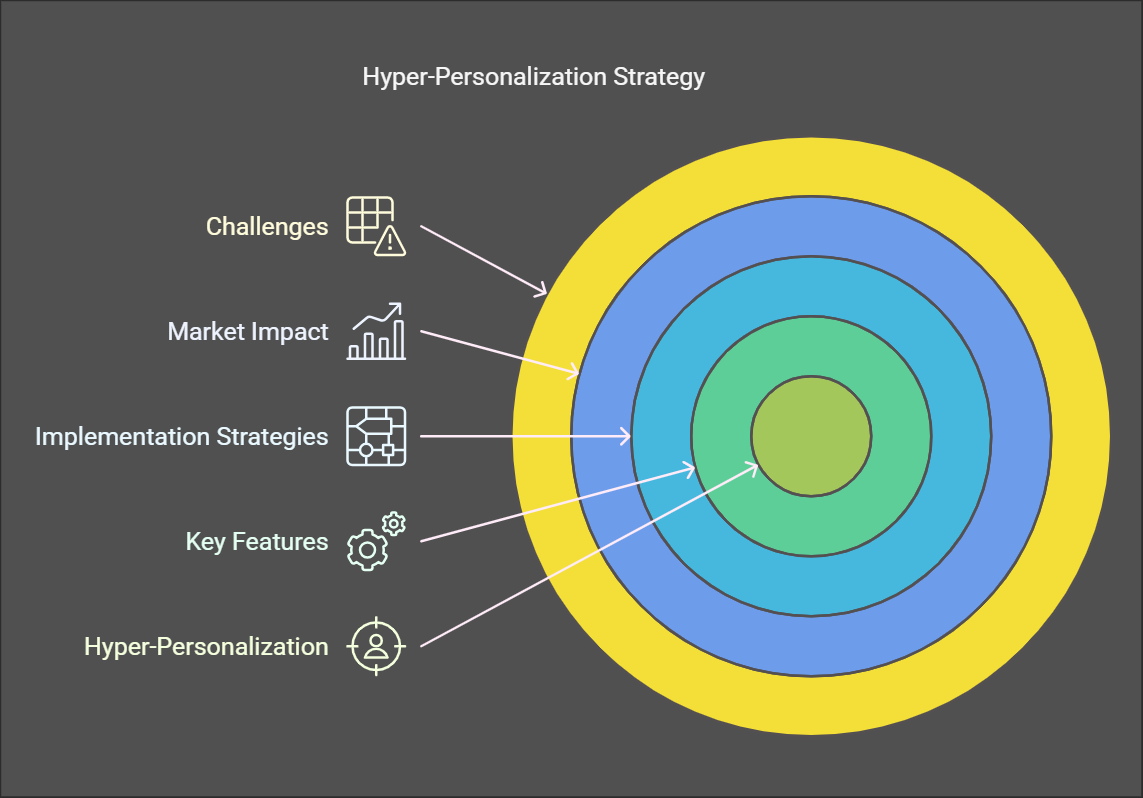
Among the top AI trends of 2025, hyper-personalization is paramount in shaping customer interactions. Real-time data, AI, and predictive analytics enable businesses to deliver uniquely tailored experiences that drive engagement, loyalty, and conversions.
Key Features of Hyper-Personalization in 2025
✅ Real-Time Data Utilization
Hyper-personalization harnesses vast amounts of real-time data—such as browsing behavior, purchase history, and social media activity—to predict preferences and deliver ultra-relevant content, offers, and recommendations instantly.
✅ AI-Driven Insights and Predictive Analytics
AI and machine learning play a pivotal role in hyper-personalization, enabling businesses to analyze customer data at scale. These technologies anticipate consumer needs, dynamically adjust marketing messages, and provide hyper-targeted recommendations tailored to each individual.
✅ Context-Aware Customer Interactions
Unlike conventional personalization that merely addresses a customer by name, hyper-personalization creates dynamic, context-aware experiences. For instance, an e-commerce platform can offer real-time product recommendations based on recent browsing behavior, while streaming services can curate content playlists tailored to a user’s evolving interests.
✅ Omnichannel Personalization
Customers today interact with brands across multiple platforms—websites, social media, mobile apps, and physical stores. Hyper-personalization ensures a seamless and consistent experience across all these channels, creating a unified customer journey that feels natural and engaging.
Effective Implementation Strategies
🔹 Ethical Data Collection & Privacy Compliance
With increasing concerns over data privacy, businesses must prioritize transparent and ethical data collection. First-party data, collected through direct customer interactions, will be essential for building trust and ensuring compliance with regulations like GDPR and CCPA.
🔹 Advanced Audience Segmentation
By categorizing customers based on behavioral insights and preferences, businesses can craft highly relevant messaging, promotions, and experiences that foster stronger relationships and long-term loyalty.
🔹 Post-Purchase Personalization
Hyper-personalization extends beyond the initial sale. Businesses can enhance customer retention with personalized thank-you messages, exclusive offers, and tailored product recommendations based on past purchases.
Market Impact and Business Advantages
Companies that successfully implement hyper-personalization will experience:
✔ Higher Engagement & Conversion Rates – Personalized experiences drive more meaningful interactions and increased purchase intent.
✔ Improved Customer Retention & Loyalty – Customers are more likely to return to brands that understand and cater to their individual preferences.
✔ Greater Revenue Growth – Tailored recommendations and promotions lead to higher average order values and customer lifetime value.
Challenges in Hyper-Personalization
Despite its benefits, hyper-personalization comes with challenges:
🚧 Data Privacy & Security Risks – Businesses must navigate evolving regulations while ensuring data protection and customer trust.
🚧 Integration Complexity – Unifying data from multiple touchpoints to create a seamless experience requires robust infrastructure and advanced AI models.
🚧 Avoiding Over-Personalization – Striking the right balance between helpful recommendations and intrusive targeting is essential to prevent customer discomfort.
6. AI in Scientific Research
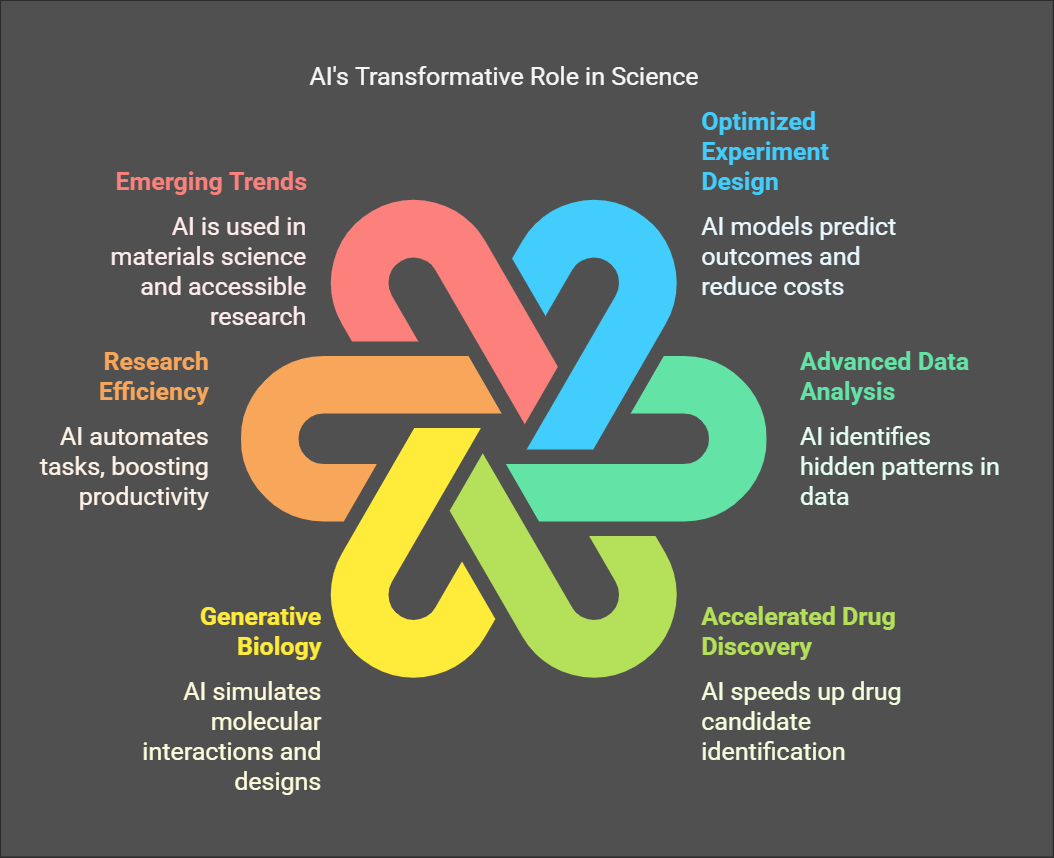
As one of the Top AI Trends of 2025, AI in scientific research is transforming the way discoveries are made by enhancing efficiency, automating complex tasks, and uncovering hidden patterns in data. From accelerating drug discovery to optimizing experimental processes, AI is revolutionizing research methodologies across diverse scientific disciplines.
Key Applications
✅ Optimized Experiment Design
AI-powered simulation models enable researchers to design experiments more efficiently by predicting outcomes and identifying optimal conditions before conducting real-world tests. This minimizes trial-and-error, reducing costs and expediting the research process.
✅ Advanced Data Analysis & Pattern Recognition
AI algorithms process vast datasets at unparalleled speed, identifying correlations and trends that might otherwise go unnoticed. This capability accelerates hypothesis generation and provides deeper insights into complex scientific challenges.
✅ Accelerated Drug Discovery & Development
In pharmaceuticals, AI is dramatically reducing the time required for drug discovery. By analyzing molecular structures and predicting drug interactions, AI helps identify promising candidates faster than traditional methods—critical in responding to global health crises.
✅ Generative Biology & Synthetic Science
AI is enabling groundbreaking advancements in biology by simulating molecular interactions, designing new proteins, and even creating synthetic DNA sequences. These developments hold immense potential for regenerative medicine, biotechnology, and disease treatment.
Impact on Research Efficiency
The integration of AI into scientific workflows enhances productivity by automating routine tasks, allowing researchers to focus on critical thinking and innovation. With funding constraints in research, AI tools maximize resources, ensuring more efficient allocation of time and effort.
Emerging Trends & Future Prospects
🔹 AI in Materials Science – AI is expediting the discovery of novel materials with unique properties, revolutionizing industries such as energy storage and nanotechnology.
🔹 Democratization of AI Research – Advances in computing power, such as NVIDIA’s Project Digits, are making AI-driven research accessible to smaller institutions, enabling a broader spectrum of scientific breakthroughs.
Challenges in AI-Powered Research
🚧 Data Privacy & Ethical Concerns – AI-driven research must balance innovation with data security, privacy, and ethical considerations, particularly in sensitive fields like healthcare and genetics.
🚧 Interdisciplinary Collaboration – The fusion of AI and scientific research demands stronger collaboration between data scientists, domain experts, and policymakers to ensure responsible and effective AI adoption.
7. AI-Driven Security Enhancements
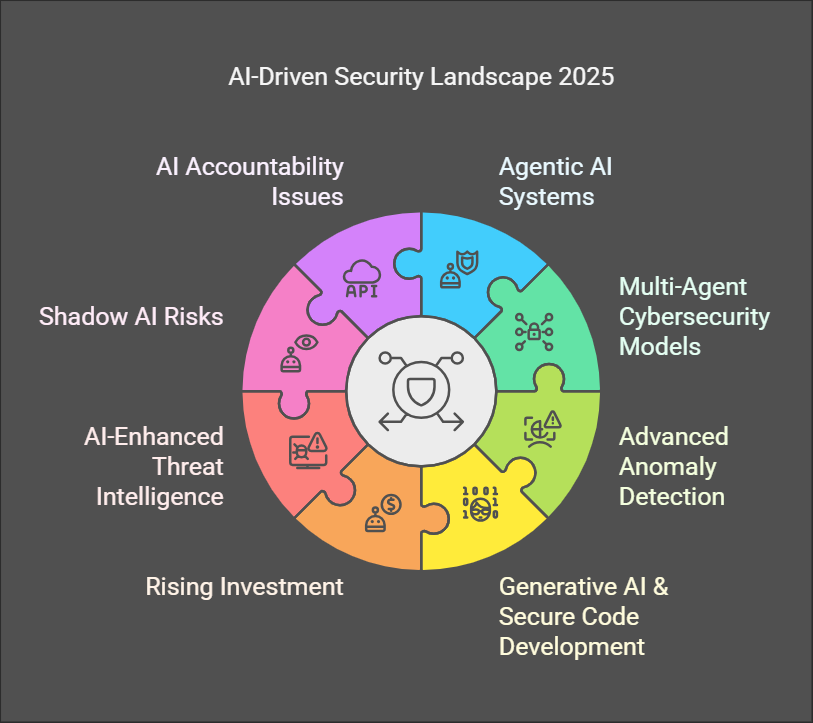
When considering the top AI trends of 2025, AI’s crucial role in strengthening security stands out. AI-powered solutions are transforming threat detection, response automation, and risk mitigation, but also introducing new vulnerabilities.
Key Developments
✅ Agentic AI Systems
Autonomous AI-driven security systems can identify, analyze, and neutralize threats with minimal human intervention. These systems enhance security efficiency but also introduce governance challenges regarding data privacy and decision accountability.
✅ Multi-Agent Cybersecurity Models
By deploying multiple AI agents that collaborate, security teams can enhance threat detection and mitigation strategies. However, the interconnected nature of these systems can also create new attack vectors that cybercriminals may exploit.
✅ Advanced Anomaly Detection
AI-powered security tools analyze vast datasets in real-time, identifying unusual patterns in network traffic and user behavior that may indicate cyber threats. This proactive approach allows for quicker incident response compared to traditional manual log analysis.
✅ Generative AI & Secure Code Development
As AI-generated code becomes more prevalent in software development, ensuring its security is a top priority. AI tools will help developers detect vulnerabilities early in the coding process, reducing potential exploits in applications and infrastructure.
Market Trends & Investment Growth
💰 Rising Investment in AI Security Solutions – Organizations are prioritizing AI-driven cybersecurity solutions, shifting from traditional security models to adaptive AI-powered defenses.
📈 AI-Enhanced Threat Intelligence – Businesses are integrating AI into security operations centers (SOCs) to detect emerging cyber threats faster and with greater accuracy.
Challenges in AI Security Implementation
🚧 Shadow AI Risks – Employees using unauthorized generative AI tools without oversight pose a significant security risk, requiring clear governance policies.
🚧 AI Accountability Issues – As AI systems make independent security decisions, organizations must establish frameworks for accountability when errors or failures occur.
8. Agentic AI Systems
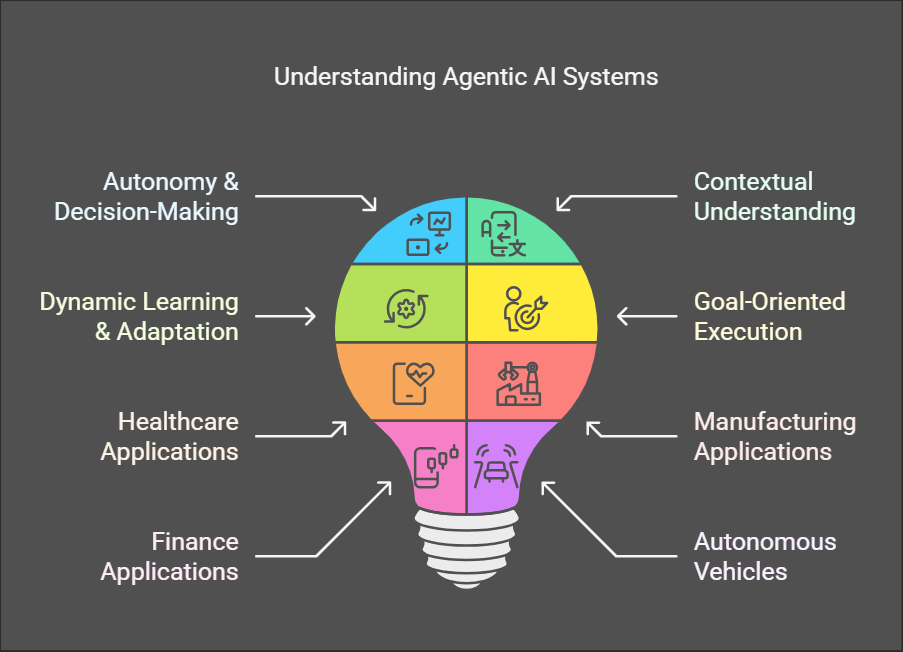
Agentic AI systems are transforming industries by enabling artificial intelligence to operate autonomously, make decisions, and dynamically adapt to changing environments. Unlike traditional AI, these systems require minimal human intervention, making them ideal for complex, real-world applications.
Key Features
✅ Autonomy & Decision-Making
Agentic AI systems can independently execute tasks, manage workflows, and adjust strategies in real-time without human oversight.
✅ Contextual Understanding
These systems analyze complex situations, process natural language instructions, and modify their responses based on contextual changes.
✅ Dynamic Learning & Adaptation
Through reinforcement learning and continuous feedback loops, agentic AI improves its decision-making and efficiency over time.
✅ Goal-Oriented Execution
Unlike conventional AI that focuses on singular tasks, agentic AI prioritizes broader objectives, aligning its actions with long-term goals.
Real-World Applications of Agentic AI
🏥 Healthcare – AI-driven patient monitoring, automated diagnostics, and personalized treatment recommendations.
🏭 Manufacturing – Smart supply chain management and adaptive production processes based on real-time demand.
💰 Finance – Autonomous fraud detection, risk assessment, and algorithmic trading strategies.
🚗 Autonomous Vehicles – Real-time navigation, obstacle avoidance, and self-learning driving behavior.
Business & Market Impact
📉 Cost Reduction & Efficiency Gains – Organizations can streamline operations by reducing human reliance on routine decision-making.
📈 Innovation Acceleration – Businesses can focus on strategic initiatives while AI handles repetitive, process-driven tasks.
Challenges & Ethical Considerations
⚠️ AI Accountability – Who is responsible when an autonomous AI makes a mistake or a critical decision?
🔐 Data Privacy & Security – Managing AI decision-making within regulatory frameworks to prevent potential data misuse.
🔄 System Reliability & Bias – Ensuring AI-driven decisions are unbiased, fair, and aligned with human values.
Final Thoughts - The Top AI Trends of 2025
As AI rapidly evolves, the Top AI Trends of 2025 are set to transform industries by driving automation, personalization, and efficiency. AI-powered agents, multimodal AI, and agentic AI systems are reshaping workflows, enabling businesses to optimize operations with minimal human intervention. Meanwhile, enhanced enterprise search and hyper-personalization are revolutionizing data access and customer engagement, offering seamless, intuitive experiences.
Sustainable AI development is a major focus, ensuring that AI advancements align with environmental responsibility. Companies are optimizing AI models for energy efficiency while leveraging AI to address global sustainability challenges. Additionally, AI’s role in scientific research and security enhancements is accelerating breakthroughs in medicine, cybersecurity, and digital safety—though ethical concerns around AI governance, privacy, and accountability remain critical.
The Top AI Trends of 2025 highlight the growing need to balance innovation with responsibility. As businesses adopt AI-driven solutions, ethical AI practices, transparency, and human oversight must remain priorities. The future of AI isn’t just about technological breakthroughs—it’s about harnessing AI for smarter, safer, and more sustainable solutions that benefit businesses, individuals, and society as a whole.

Subscribe to our weekly newsletter below and never miss the latest product or an exclusive offer.



